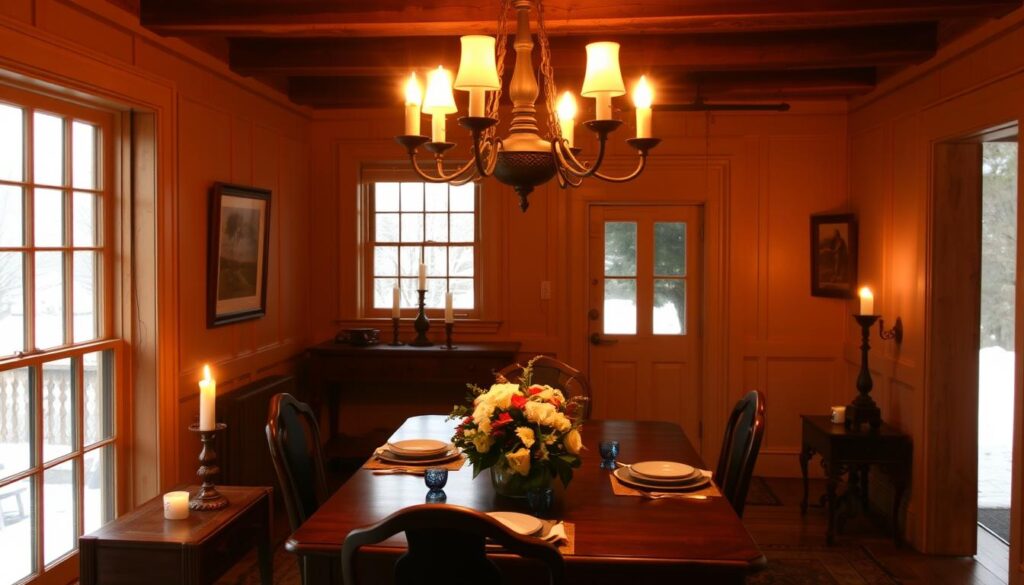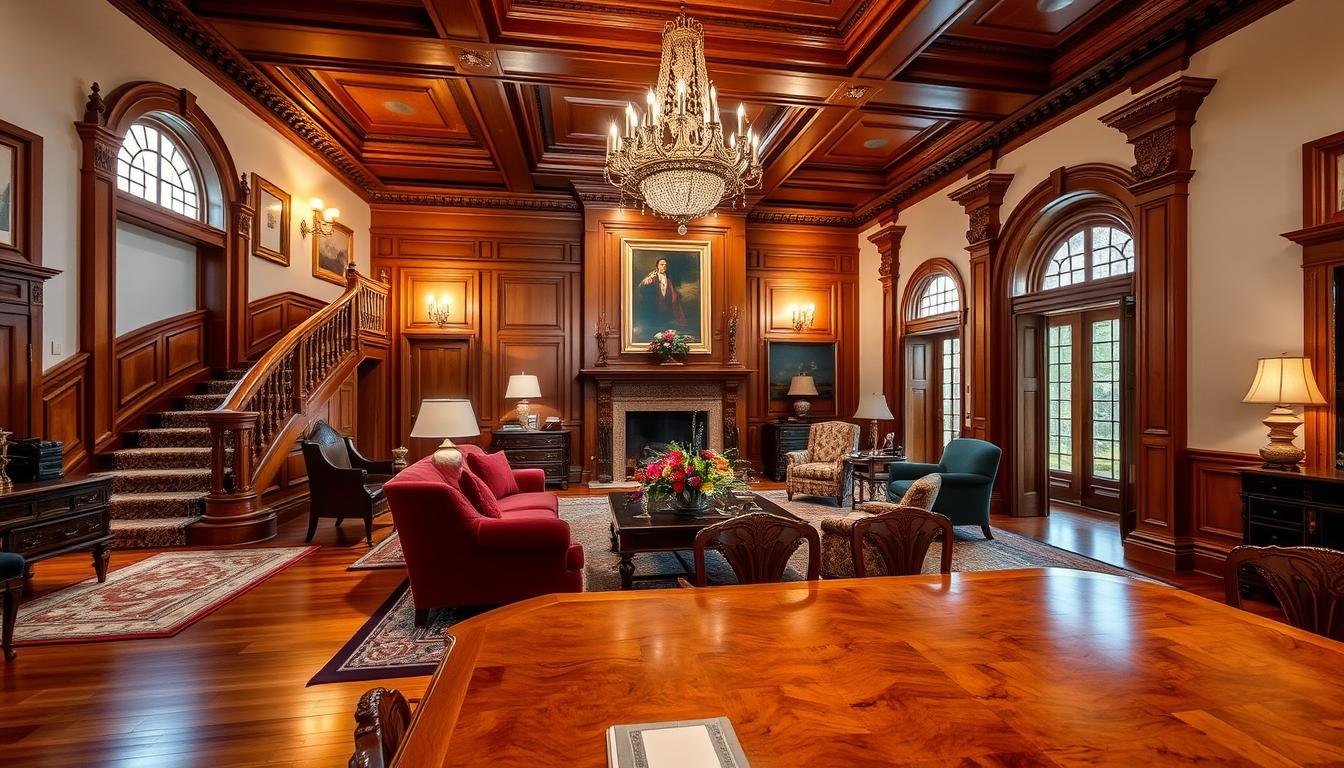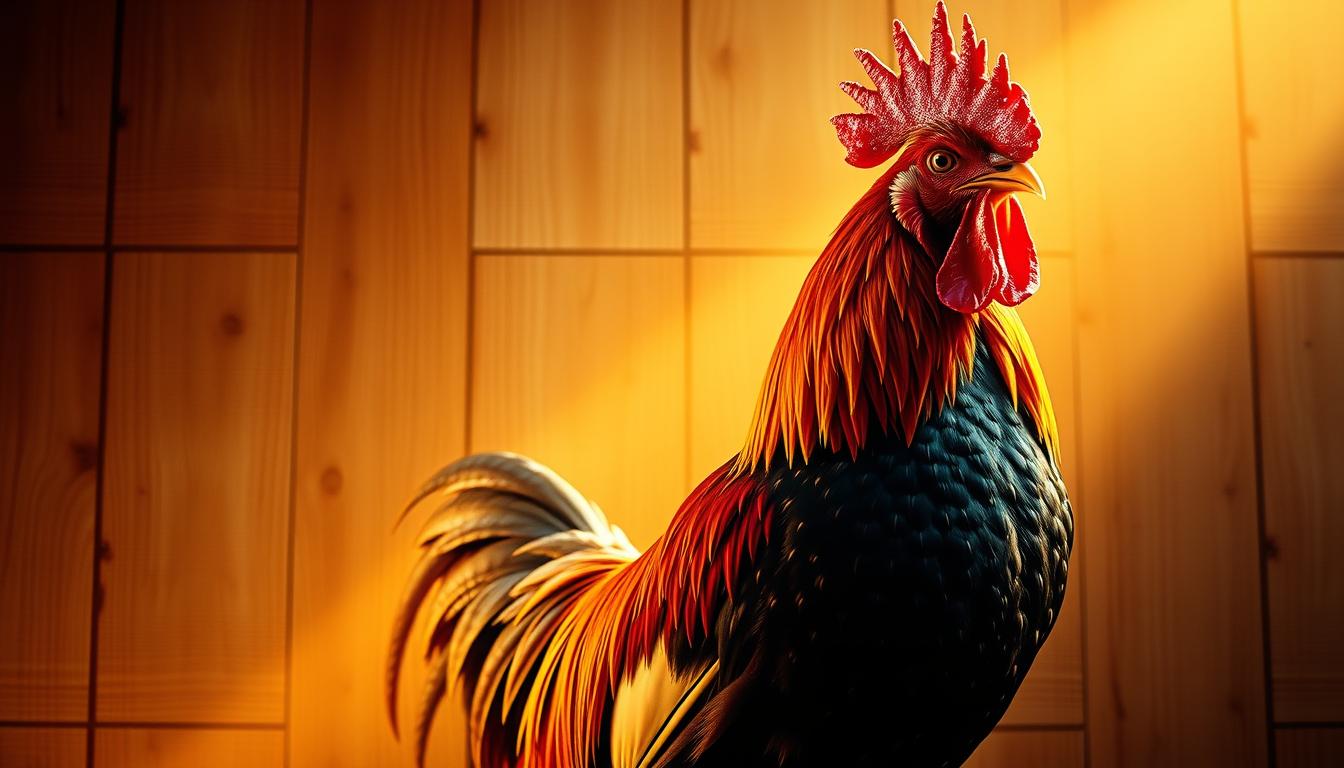Did you know that colonial design has shaped American architecture for centuries? It still influences how we decorate our homes today.
Creating a colonial home interior is more than picking furniture and decor. It’s about bringing the past to life while adding today’s comforts.
In our journey through colonial design, we’ll cover its defining elements. We’ll talk about traditional colors and classic furniture. Plus, we’ll share colonial design ideas to make your home better.
Key Takeaways
- Understanding the historical context of colonial design
- Identifying key elements of colonial home decor
- Balancing historical integrity with modern comforts
- Selecting traditional color schemes and classic furniture
- Applying colonial design ideas to your living space
Understanding Colonial Home Design Elements
Knowing the elements of colonial home design is key to creating a welcoming space. Colonial homes are known for their classic beauty and timeless charm. This charm comes from specific architectural features, traditional materials, and classic colors.
Key Architectural Features of Colonial Homes
Colonial homes stand out with their symmetrical design, evenly spaced windows, and central front door. The symmetry brings balance and order to the home.
Double-hung windows and gabled roofs add to the traditional charm. Decorative entryways with pediments or pilasters enhance the classic look.
Traditional Materials Used in Colonial Styles
Traditional materials are crucial for keeping colonial home interiors authentic. Wood is a mainstay, used for flooring, paneling, and furniture. Brick and stone are also common, for exterior walls and fireplaces, adding solidity and history.
These materials make colonial interiors warm and inviting. The natural textures and tones of wood, brick, and stone create a rich, layered look that’s both elegant and cozy.
Color Palettes That Define Colonial Interiors
The color palette in colonial interiors is soft and classic. Beige, cream, and off-white are common, providing a calm background for the rich textures of traditional materials.
Muted earth tones, like shades of green, blue, and red, add depth and character. These colors are used in furniture, drapery, and accents, creating a balanced interior.
Choosing the Right Colonial Interior Style
Colonial homes are perfect for interior design, with many styles to pick from. Each style shows a different part of American history. The colonial era, from the early 17th to the late 18th century, saw the growth of unique design elements.
Differences Between Early and Late Colonial Styles
Early colonial styles were simple and practical, fitting the settlers’ needs. As the colonies grew, late colonial styles came, with more complex designs and luxurious materials. The use of local materials and craftsmanship was key in shaping these styles.
Early interiors had wooden furniture, simple textiles, and calm colors. Late interiors had more detailed furniture, richer fabrics, and a wider color range, thanks to international trade.
Popular Colonial Interior Styles in America
In America, colonial styles have been seen in different ways, leading to trends like Colonial Revival and Colonial Chic. Colonial Revival, from the late 19th century, aimed to bring back colonial design’s classic elements. Colonial Chic gives a modern twist to traditional colonial looks.
For colonial interior paint colors, traditional colors include creams, blues, and greens, showing the era’s use of natural dyes. Modern takes on colonial design mix these colors with today’s hues, creating a modern colonial interior design that respects history and today.
Knowing the differences between early and late colonial styles helps homeowners choose their design. They can mix historical authenticity with their own style.
Essential Furniture for Colonial Homes
The furniture in a colonial home is more than just useful. It shows the home’s rich history. Choosing the right furniture is key to keeping the home’s style and era alive.
Classic Furniture Pieces to Include
Traditional colonial furniture is known for its simplicity and quality. It often uses natural materials like wood. Here are some must-have pieces:
- Wooden Dressers: Often ornate and made from solid woods like oak or maple.
- Vintage Armchairs: Typically upholstered in traditional fabrics such as velvet or linen.
- Four-Poster Beds: A hallmark of colonial bedrooms, often made from sturdy hardwoods.
These items not only make your home look great. They also keep its historical charm alive.
Sourcing Authentic Colonial Furniture
Finding authentic colonial furniture is important. You can choose from real antiques or high-quality copies. Here are some tips:
- Look for furniture made from traditional materials and crafted using techniques consistent with the colonial period.
- Consider purchasing from reputable antique dealers or manufacturers specializing in colonial-style furniture.
- Inspect the furniture for signs of age and wear if you’re buying antique pieces.
Furniture Arrangement Tips for Open Spaces
Setting up furniture in open spaces can be tricky. But, there are ways to make it work. Here are some tips:
- Use area rugs to define different spaces within the open area.
- Arrange furniture in a way that creates conversation circles.
- Balance the space with a mix of large and small furniture pieces.
By picking and arranging your furniture wisely, you can boost your home’s colonial charm. And make it both beautiful and practical for today’s living.
Color Schemes That Enhance Colonial Interiors
Choosing the right colors is key to making a colonial home’s interior shine. The correct hues can highlight the home’s architecture, add warmth, and keep its historical charm alive.
Paint Colors That Complement Colonial Features
Colonial interiors often feature soft, muted colors. These include earth tones and soft pastels. They not only match the home’s architecture but also make it feel cozy and welcoming.
Some top paint colors for colonial homes are:
- Soft whites and creams, which brighten spaces and make them appear larger.
- Mellow yellows and blues, adding warmth and elegance.
- Muted greens, like sage or moss, for a calming and natural feel.
When picking paint colors, think about your home’s history. Looking into original color schemes can inspire you.
Accent Colors to Add Depth and Character
Accent colors are vital for adding depth and personality to colonial interiors. They help create visual interest and improve your home’s look.
Here are ways to use accent colors:
- Choose rich, bold colors for furniture or standout pieces.
- Use vibrant colors in accessories, like rugs, throw pillows, or art.
- Introduce subtle contrast with trim, molding, or architectural details.
By mixing your main color scheme with thoughtful accent colors, you can create a balanced and beautiful interior. It will honor the colonial style while showing off your personal taste.
Flooring Options for Colonial Homes
Choosing the right flooring is key for colonial homes. Traditional materials add to the home’s historic charm and beauty.
Recommended Flooring Materials
Colonial homes often feature hardwood, like oak and pine. Sometimes, stone or brick is used too. Hardwood was popular for its durability and timeless appeal.
“The right flooring can transform a room,” say design experts. “In colonial homes, picking materials that match the home’s style is crucial.”
- Hardwood flooring, such as oak and pine, for a classic and durable option.
- Stone or brick flooring for a more rustic or historic look.
Maintaining and Restoring Historic Floors
Keeping historic floors in good shape is vital. It’s important to check the flooring’s condition before deciding what to do.
Hardwood floors need regular cleaning and refinishing. If the flooring is badly damaged, you might need to repair or replace some boards.
“Keeping the original flooring is more than just preserving its look. It’s about keeping the home’s historical value.”
By picking the right flooring and caring for it, homeowners can keep their colonial home beautiful and historic for many years.
Lighting in Colonial Home Interiors
The right lighting can make a colonial home feel warm and inviting. Lighting fixtures in these homes are not just for light; they also decorate the space. We’ll look at traditional lighting and how to use them in modern designs.

Types of Lighting Fixtures for Colonial Spaces
Colonial homes used candles, chandeliers, and sconces for light. These were often made from brass or copper. They lit the way and showed off the homeowner’s style.
- Candles: Used for both lighting and ambiance, candles were a staple in colonial homes.
- Chandeliers: Often made from brass or crystal, chandeliers were a centerpiece in many colonial homes.
- Sconces: Wall-mounted sconces provided additional lighting and were often decorated with intricate designs.
Tips for Layering Light Effectively
Layering light is key to a warm atmosphere in colonial homes. Use a mix of light sources to get this look.
| Layer | Lighting Type | Purpose |
|---|---|---|
| Ambient | Chandeliers, Ceiling Fixtures | Provides overall lighting |
| Task | Table Lamps, Floor Lamps | Illuminates specific areas for tasks |
| Accent | Sconces, Picture Lights | Highlights decorative features |
By layering light well, we can make a colonial home feel both real and welcoming. It’s about mixing old and new to create a space that feels right.
Incorporating Textiles and Drapery
Adding the right textiles and drapery is key to capturing colonial style at home. Textiles were crucial in colonial decor, adding warmth and character to rooms.
Fabrics and patterns greatly shape a colonial home’s look. Traditional colonial decorating favored cotton, linen, and wool. These materials were durable and simple, reflecting the era’s values.
Choosing Fabrics That Reflect Colonial Aesthetics
When picking fabrics for your colonial home, go for materials typical of the time. Natural fibers were common, with stripes, florals, and toile patterns adding interest and coziness.
- Cotton and linen for upholstery and drapery
- Wool for rugs and heavy drapery
- Simple patterns like stripes and florals
For drapery, use heavy fabrics to add depth and texture to windows. They block light and keep homes warm in cold months.
Popular Patterns and Textures for Colonial Decor
The patterns and textures you pick greatly affect your colonial home’s look. Stripes, florals, and toile were popular, along with damsel and brocade. These were used in upholstery and drapery for elegance.
“The right textiles can transform a room, making it feel more inviting and historically rich.”
To enhance the colonial look, mix different textures in your textiles. Using velvet, silk, and linen adds depth and interest to your space.
By carefully choosing textiles and drapery that echo the colonial era, you can make your home feel authentic and welcoming.
Artwork and Accessories in Colonial Homes
Finding the right artwork and accessories can make any colonial home even more charming. These items are key in setting the look of colonial interiors. They show off the history and culture of their time.
When picking artwork for a colonial home, choose pieces that match the design. Look for traditional items like antique maps, portraits, and landscapes. These pieces should reflect the era’s artistic styles.
Selecting Art That Complements Colonial Design
To keep a colonial home true to its roots, choose artwork that fits the period. Antique prints can add a rich historical layer. Traditional crafts bring warmth and character to the space.
Historical Accessories to Enhance Authenticity
Historical accessories are crucial for a colonial home’s authenticity. Items like vintage furniture, antique lighting, and traditional textiles enhance the home’s historical feel. Using these items thoughtfully creates a welcoming space that respects the home’s heritage.
By picking artwork and accessories that fit colonial design, homeowners can make a space that’s both historically rich and personally meaningful.
Maximizing Space in Colonial Interiors
Maximizing space in colonial interiors is an art. It balances history with modern needs. Colonial homes are charming but often have space challenges.

Layout Considerations for Small Spaces
In small colonial homes, layout is key. Opt for multi-functional furniture like storage ottomans or desks with shelves. This saves space.
The scale of furniture matters too. Choose pieces that fit the room well. Light colors on walls and floors also make spaces feel bigger.
- Select furniture with clean lines and minimal ornamentation to maintain a sense of openness.
- Utilize vertical space by installing shelves or storage units that go up to the ceiling.
- Consider the flow of the room and arrange furniture to facilitate easy movement.
Creating Functional Areas with Colonial Charm
To keep colonial charm while using space well, define areas in the home. Use area rugs, different lights, or ceiling height changes to do this.
In a living room, a cozy reading nook can be made with a chair and lamp. In kitchens, efficient use of corner spaces with carousel units or lazy susans keeps the look traditional.
“The key to successful colonial interior design lies in striking a balance between historical authenticity and modern convenience.”
By choosing the right furniture and layout, and adding colonial touches, homes can be both charming and functional.
Emphasizing Architectural Details
Colonial style interiors are known for their focus on architectural details like trim work and fireplaces. These elements enhance the home’s beauty and keep its historical integrity.
When updating a colonial home, it’s key to keep these details intact. Crown molding and trim work add elegance and sophistication to the interior.
Crown Molding and Trim Work
Crown molding is a key feature of colonial architecture. It greatly improves a room’s look. To keep it authentic, use traditional materials and methods during restoration.
- Use traditional molding profiles to maintain authenticity.
- Choose materials that are consistent with the original construction, such as wood.
- Ensure that the installation is done by skilled craftsmen familiar with historical methods.
Trim work around doors, windows, and baseboards also needs careful attention. The quality of this trim greatly affects the interior’s look.
| Type of Trim | Traditional Material | Modern Alternative |
|---|---|---|
| Crown Molding | Wood | MDF |
| Door and Window Trim | Solid Wood | Engineered Wood |
| Baseboard Trim | Hardwood | Vinyl |
Spotlighting Fireplaces and Hearths
Fireplaces are vital in colonial homes, acting as a room’s centerpiece. Restoring a fireplace means fixing the structure and keeping its historical charm.
“A fireplace is not just a source of warmth; it’s a centerpiece that brings people together, adding warmth and character to a home.”
To highlight fireplaces and hearths, consider these steps:
- Restore the original materials and craftsmanship.
- Use appropriate mantel designs that complement the colonial style.
- Ensure that any modern additions, such as inserts, are installed with care to preserve the original look.
By focusing on these architectural details, homeowners can keep their colonial home’s character. This makes it a true reflection of its historical roots.
Landscaping and Outdoor Integration
The charm of a colonial home is not just inside; the outdoors matters too. Traditional garden designs and landscaping are key to matching the colonial home’s style.
Harmonizing Outdoor Spaces with Colonial Aesthetics
To make outdoor spaces match, we must think about the home’s architecture. We choose plants, hardscaping, and features that match the home’s historical look. For example, a colonial revival home might have a formal garden with symmetrical beds and stone paths.
Outdoor furniture and decor should also reflect the colonial style. Look for wooden benches, wrought iron accents, and classic garden ornaments.
Traditional Garden Designs for Colonial Homes
Colonial homes often have traditional gardens that add to their charm. Some popular designs include:
- Herb gardens, used for cooking and medicine
- Symmetrical gardens, showing the colonial design’s order
- White gardens, with plants in white and cream shades
These designs not only look beautiful but also tie the home’s style together.
| Garden Design | Description | Features |
|---|---|---|
| Herb Garden | A garden with herbs from colonial times | Rosemary, thyme, mint, and more |
| Symmetrical Garden | A formal garden with symmetrical beds and paths | Stone paths, boxwood hedges, and flowers |
| White Garden | A garden with white flowers and foliage | White roses, lilies, and other white plants |
By using these traditional garden designs, we can make our colonial home even more beautiful. It creates a smooth transition from inside to outside.
Preserving Colonial Home Integrity
Keeping colonial homes in good shape needs careful thought. When you update them, mix modern needs with keeping the old charm. This balance is key.
Restoration Techniques
For keeping your colonial home’s history, team up with experts in historic home interior design. They know how to save special features like moldings and fireplaces. They also add modern touches.
Renovation Considerations
Renovating a colonial home means thinking about its history. Choose materials and designs that match the home’s style. This way, updates respect the home’s classic look.
By mixing restoration and renovation wisely, you keep your colonial home beautiful. It will stay a great example of classic home updates for many years.



